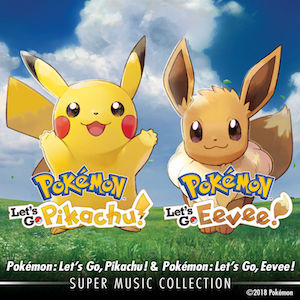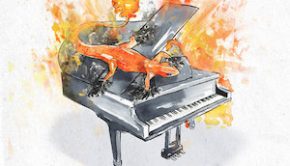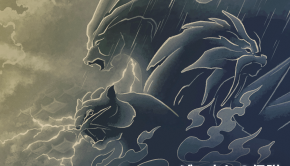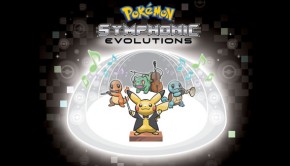Pokémon: Let’s Go, Pikachu! & Pokémon: Let’s Go, Eevee! Super Music Collection
 |
Album Title: Pokémon: Let’s Go, Pikachu! & Pokémon: Let’s Go, Eevee! Super Music Collection |
| Record Label: The Pokémon Company |
|
| Catalog No.: OVCP-0009 |
|
| Release Date: December 1, 2018 |
|
| Purchase: Buy at CDJapan |
Overview
Pokémon: Let’s Go, Pikachu! & Pokémon: Let’s Go, Eevee! Super Music Collection is the soundtrack to the Pokémon: Let’s Go games released on Nintendo Switch. The soundtrack contains not only the score to these games, but also the previously unreleased soundtrack to Pokémon Yellow for the Game Boy. The score for the Pokémon: Let’s Go games mostly comprise of updates by Shota Kageyama to the original chiptune compositions by Jun’ichi Masuda, preserving their original lines of music while also making some additions and expansions, all with a largely orchestral sound library with the occasional rock elements added. There are also a few new compositions by Kageyama that cover some of the new game scenarios. The result is a fresh yet ultimately familiar tread through the beloved score of the first generation of Pokémon music.
Body
The soundtrack begins with a very quick new composition by Kageyama that serves as an introduction to how the new score will sound. It’s a bright and playful little track that shows the many different instruments that will be used throughout. Following is another new track, “Choose Your Language”, a short track that does its job but isn’t too memorable otherwise. Later is the new “Catch (Wild Pokémon)”, which plays during the new extended catching sequences. Kageyama does a good job of emulating Masuda’s style here, starting the track with a quick chaotic opening similar to those of the battle themes, and then later even working in some recognizable figures from Masuda’s battle themes as supporting elements of the track. Another version, “Catch (GO Park)” is quite similar in energy and style but changes up the instrumentation and feels generally more powerful, thanks to its heavier usage of brass. The “GO Park” theme is itself the last new track, being a grander rock and orchestra track that works in interesting variations of the familiar “Title Screen” theme alongside new melodies. It’s easily the best of the new tracks, with a great usage of all of the instruments available, as well as a very satisfying take on the “Title Screen” melodies. Really, all of these new themes are good and fit in well, though they are quite few and aren’t really the draw of the soundtrack.
The rest of the two discs of the main soundtrack are reworkings of Masuda’s original score. Where that original score was restricted to just having three lines of music due to limitations in the Game Boy sound chip, here Kageyama chooses to use those same three lines of music to as a base for his reworkings, usually keeping them entirely intact for at least one loop before making adjustments. This means that Masuda’s prevalent use of counterpoint is preserved, which is wonderful given how rare it is to find in compositions since that first generation of soundtracks. It’s a wonderful way of keeping the tracks very recognizable, having the core melodies and atmospheres mostly fully intact throughout, while also allowing for some expansion and development in sound. In this way, I think the soundtrack avoids alienating fans of the original in the way so many remastered soundtracks of recent years have done. Due to the nature of the arrangements, and also the quality of the sound library, the soundtrack never sounds like anything that one would actually hear in a classical orchestral concert; yet Kageyama’s expertly consistent arranging style and instrumentation means that it has its own character, so that it rarely feels like it is being held back by its sound library, as other soundtracks that use orchestral sound libraries often do. Only a couple of tracks did not get an upgrade, like the odd “Opening Movie” and “Pikachu’s Beach”, but their omission is hardly felt given how excellent the rest of the soundtrack is.
Thus the original games’ famous area themes still charm and bring up feelings of nostalgia. Kageyama does a good job of deciding which instruments should take the lead melody and which others should support across the different tracks, to give each place a different feeling. The town themes are all lovely, such as the soft “Pallet Town” with its focus on winds, the bouncy “Pewter City” with pizzicato strings, or the cozy “Vermillion City” with its picked guitar emphasis. The route themes are similarly successful, from the spritely “Road to Viridian City” to the grand and marching “Road to Cerulean City.” A few tracks are a bit less successful: “The S.S. Anne” is one track where the sound library holds back the track, as the brass sounds a bit awkward throughout; “Lavender Town” might also be divisive, as I feel the emphasis should have been more on bass instruments rather than on treble instruments. But as a whole the area tracks are great new renditions of classics.
The battle themes are also largely successful, here usually adding in rock elements in addition to the orchestra. “Battle! (Trainer Battle)” shows how Kageyama is able to balance all of the different elements and instruments together, and his choice to have the strings handle the undulating undercurrent common to many of the battle themes is a great one. The use of electric guitar never becomes too much, although it might have been nice if he let a solo in here or there. “Battle! (Wild Pokémon)” has the brief but effective touch of acoustic guitar to give the track some personality, while “Final Battle! (Rival)” has a wonderful rendition of the opening cascades on strings, as well as an effective emphasis of the different rhythms that gives the track real punch. The new “Battle! (Master Trainer Battle)” is a variation on “Battle! (Trainer Battle)” that uniquely focuses on synths, and perhaps is weaker than the other tracks because of it, but it’s still a decent track. The alternation of instruments across these tracks is also very effective, keeping the tracks from becoming too repetitive, which is good since they’re heard so often in the game.
I want to make special mention of a few standout tracks. “Caves of Mt Moon” is one of the few tracks that takes a lot of liberty with its composition, keeping the original melody figures but using repetitions of varying lengths of them to create a great sense of disorientation. “Pokémon Mansion” is an expert reimagining of the chaotic original, using piano as the glitchy base and allowing the rest of the instruments shift and build around it, so that it isn’t nearly as monotonous as the original was. “We’re Back” is a lovely but short guitar rendition of “Pallet Town”. The bubbly “Mystery Gift” did not originate in Pokémon Yellow, but Kageyama makes it sound as if it did. Then there is the delightful “Connection”, which genuinely surprised me when I first heard it, as it cleverly started with the original chiptune digital connection tone before suddenly blossoming to include the full orchestra mid-phrase. It makes me sort of wish Kageyama had managed to work in the original chiptune into more tracks, but that might have lessened its impact here.
As for the original soundtrack of Pokémon Yellow, there aren’t really any surprises here. It has all of the tracks of the previously released Pokémon Red/Green soundtracks, minus the Pokémon cries, and with minor changes to track times. These tracks all still sound great to this day, and I’ll be honest in saying that I wanted the Let’s Go soundtrack primarily for this portion of it. The 11 new tracks in Pokémon Yellow that aren’t in the Red/Green soundtracks are mostly short jingles like “Picked up an Item!” or “Obtained a Pokémon!”. The only substantial ones are the odd “Opening Movie” and “Pikachu’s Beach”, the alright “Theme of Jesse and James” and “Pikachu’s Beach (Results Announcement)”, and the charming “Connection,” which is easily the best of these tracks. The new tracks written for Pokémon: Let’s Go (ie. Catch, GO Park, etc) are not rendered in chiptune, as the new tracks of HeartGold/SoulSilver had been done for their chiptune portion, but this is quite alright, since there is more than enough wonderful music here already.
Summary
Pokémon: Let’s Go, Pikachu! & Pokémon: Let’s Go, Eevee! Super Music Collection is a wonderful update on the first generation of Pokémon music. The orchestral samples used throughout sound great for the most part, even though they don’t actually come together in a classical orchestral sound. It is a very consistent sounding score thanks to Kageyama’s approach to instrumentation and handling of melodies, although I wouldn’t have minded new melodies or variations of them on the second loop of the tracks. It’s a more faithful adaptation than what we got for FireRed and LeafGreen, but it on the whole much better sounding. It also compares favourably next to many of the recent fan-made arrangement albums. The bonus of having the Pokémon Yellow soundtrack is also nice, and at present it is the easiest way to get a first generation soundtrack, especially given the very modest price of the digital package. Hopefully any future remakes of older Pokémon games will also take this approach.
Do you agree with the review and score? Let us know in the comments below!
4
Posted on January 23, 2020 by Tien Hoang. Last modified on January 23, 2020.














